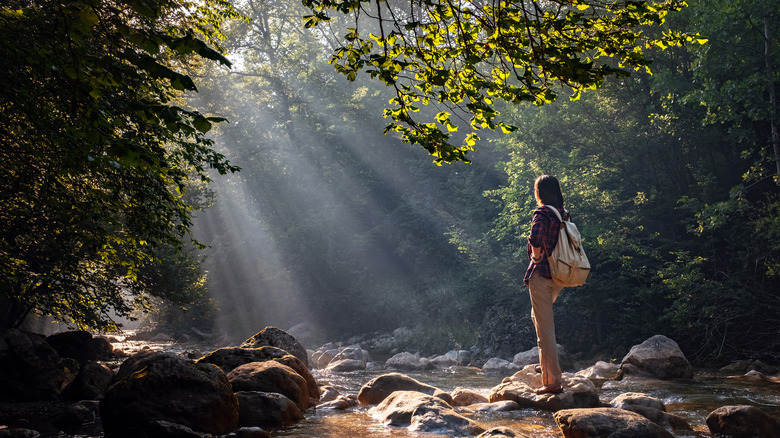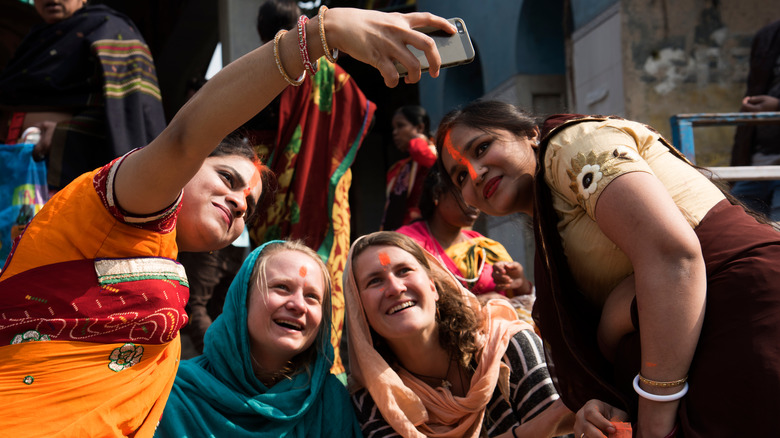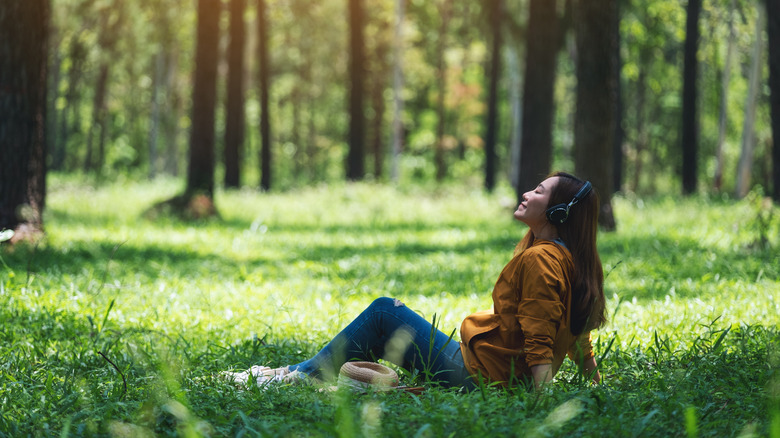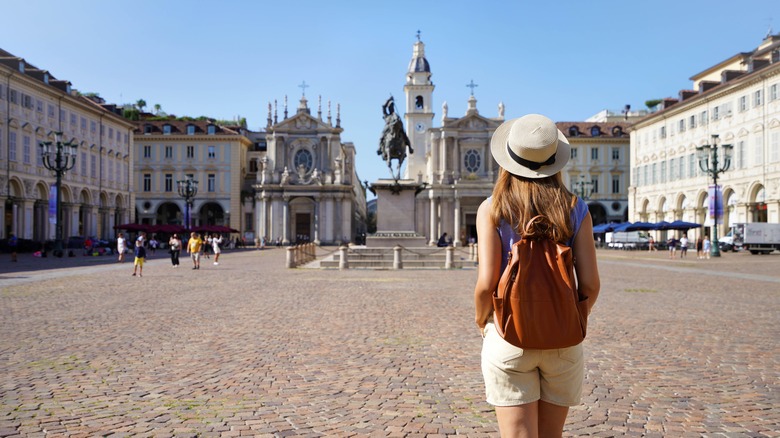Why Slow Travel Is More Than A Passing Trend
Slow travel is a growing trend, especially as more and more people are becoming remote workers and taking up the digital nomad lifestyle. But what is slow travel and why are people hopping on the trend? Well, slow travel asks you to take your time while traveling, focusing on the journey and the experience of seeing the world rather than rushing from site to site, city to city, and country to country. Slow travelers may stay in one region or even just one city for a longer period of time, allowing them to explore that area more deeply and become more well-acquainted with the local culture.
Slow travel is the epitome of the saying, "It's not the destination, it's the journey." As cliche as that may sound, slow travel really is a journey of discovery and even self-enlightenment, something that more and more people are making a priority along their travels. As the popularity of globetrotting increases steadily for the younger generations, we may see slow travel take center stage rather than just becoming a passing trend.
How the slow travel trend started
The slow travel movement is related to the slow food movement, a trend that began in Italy in the 1980s and promotes more thoughtful consumption of food as well as sourcing food products that are grown locally and in an environmentally friendly way. The ultimate purpose of the slow food movement has been to rejuvenate food traditions by promoting independent restaurants and the benefits of locally-sourced ingredients, thus reviving regional economies which have the effect of generating jobs and a higher quality of life.
Slow travel, also called slow tourism, is simply another side of the same coin. It is a way of travel that individuals are pursuing to combat the issues associated with conventional tourist-oriented travel, including overtourism, environmental damage, lack of authentic cultural experience, and overspending. Today, many travelers around the world are quietly taking up slow travel, especially as concerns grow over the ethics of travel and how travelers' presence at destinations can impact destinations. On the other hand, slow travel is also seen as a way to improve your personal relationship with travel, just as one might seek to improve their personal relationship with food via slow food philosophies. If you've ever returned from a trip exhausted rather than rejuvenated, saying the all-too-common phrase, "I need a vacation from my vacation," you might benefit from trying out slow travel.
Why slow travel is a growing trend
Slow travel is growing in popularity for many reasons. For one, younger generations are working hard at self-improvement and changing generational patterns of trauma. For many, this can mean taking their own unique life path and deviating from "the norm." The norm, in this case, is waiting to travel until you're retired. Young people may also be eschewing traditional travel in favor of slow travel as a way of combatting predatory forms of capitalism, climate change, and other types of global inequity. Slow travel discourages mindless consumption and thus alleviates the negative impacts an individual can have at their travel destination.
People also want more authentic travel experiences. It allows individuals to gain a more in-depth understanding of the communities and cultures they visit, creating a truly unique and enriching experience that can be hard to get from traditional travel. On top of that, the growth of the slow travel trend has been influenced by remote workers. Digital nomads and people who work remotely are uniquely positioned to slow travel, as they can easily take their jobs with them while moving around and experiencing the world at a slower pace.
Why slow travel might be better than regular travel
Slow travel allows travelers to have a more meaningful and authentic experience of the places they visit. The mindset encourages travelers to take their time and get to know the locals, the culture, and the customs of the place they are visiting. Slow travel also encourages travelers to seek out destinations off the beaten path that may not be as touristy but are still just as fascinating. This is where slow food and slow travel can even converge, as seeking restaurants outside of tourist areas is a fantastic way to promote regional food production and spread the wealth to locally-owned restaurants and shops. Moreover, slow travel is often more economical than traditional tourism since you may not stay and eat around the more expensive areas. Not only are you doing the local businesses a favor, but you may save some money by not getting overcharged for food and other products.
Slow travel can also be more environmentally sustainable as travelers have the ability to make conscious decisions about what type of transportation they use and the accommodations they might stay at. Travelers can make more eco-friendly choices like riding bikes or taking public transport as they aren't in a rush. Slow travelers may also opt to stay at lodgings owned by locals rather than large property management companies or chain hotels.
Different ways people are slow traveling
Despite what the name might imply, you don't actually need tons of time to slow travel. Quite the contrary. You can slow travel over any length of time, whether it's a weekend or even a year. Slow travelers don't necessarily need to stay in one place for a long period of time, but they should simply try to maximize the time they do have by immersing themselves deeply into the culture and way of life at their destination rather than feeling compelled to see as much as possible in a small amount of time.
There are many ways slow travelers can explore a destination if they're short on time. If you've only got a few days somewhere, you may want to spend one day sightseeing and then simply spend the next day in a park, eating a picnic of local food products, walking around, and doing a bit of people-watching. If you have only two weeks of vacation time a year, you might feel compelled to spend it doing as much as possible, but this is the perfect time to try slow travel and truly disconnect from the daily demands of life. You might get some FOMO if you don't see or do everything you initially wanted to, but you'll likely feel better having done less and made deeper connections at your destination.
Destinations that are great for slow travel
While you can slow travel pretty much anywhere, anytime, with anyone, there are some destinations that are more well-suited to a slower pace of travel. One such country is Costa Rica. Today, it is a major digital nomad hub since it has a robust visa program for remote workers and draws in people who desire a more laid-back lifestyle. Pura vida is a common phrase in Costa Rica that literally means "pure life" but essentially translates to being in the moment, loving life, and taking things as they come. Additionally, Costa Rica is also incredibly environmentally friendly, taking a very progressive lead compared to almost every country in the world. It's the perfect destination to try out slow travel as there is little pressure to do anything other than enjoy la pura vida.
Another country that attracts lots of slow travel first-timers will come as no surprise since it's the origin of the slow food movement: Italy. It's so easy to wile away the hours wandering the cobblestone streets of Italian towns, small and large. Whether you're in the heart of Rome or wandering the medieval walls of Lucca, you'll find yourself in good company as the locals take the slow pace of life there very seriously. Take a couple of hours to eat your lunch and enjoy the company of your travel companion(s), explore the piazzas, and take regular trips to the countryside to see the true beauty of Italy.





